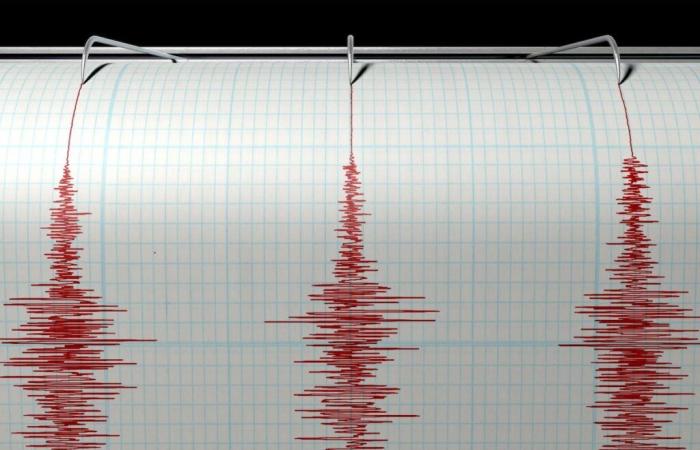An earthquake or earthquake is an abrupt movement of the earth caused by the sudden release of energy within it. The most common cause of this natural phenomenon is the movement of tectonic plates, so it is common in failures because they collide or slide with each other. This friction generates immense tension between the plaques that when freeing produces mass vibrations, called seismic waves. These are moved through the rock and to the surface.
All these terms are synonyms. In any case, the term “earthquake” is used when reference is made to any movement of the earth’s crust, regardless of its intensity or the consequences it caused. Meanwhile, the use of “tremor” or “earthquake” does differ from these characteristics. Tremor is used when the movement caused by the earthquake is mild and does not cause damage. Meanwhile, the earthquake has a greater magnitude, to the point of causing victims or severe destruction in buildings.
The National Institute of Seismic Prevention (SSN) recommends those who are inside a car at the time of an earthquake, stop and leave the vehicle to a safe place. In addition, it is important to stay away from buildings, trees and light posts.
The Richter seismological scale, also known as a local magnitude scale, was used for a long time to measure the magnitude of an earthquake. It was established in 1935 by seismologist Charles Francis Richter and his colleague Beno Gutenberg. However, in the 21st century it was replaced, because it had originally been created to measure weak tremors. When calculating the magnitude of a more intense telluric movement, it cannot differentiate all the largest earthquakes and interprets them as similar.
At present, its successor is the seismological scale of magnitude of moment, which was introduced by Thomas C. Hanks and Hiroo Kanamori in 1979. This coincides and continues with the parameters of the Richter scale, but it serves to measure the energy released in earthquakes of magnitudes greater than 6.9, which is the point where the previous one begins to fail.
Another way of measuring earthquakes is with the modified Mercalli scale (mm), which has twelve degrees expressed in Roman numbers (I to the XII). This allows to measure its intensity (not magnitude) and the effects caused by the earthquake, which depend on the conditions of the land, the vulnerability of the constructions and the epicentral distance. The National Institute of Seismic Prevention of Argentina usually uses it to describe how the earthquake affected the land in which it happened, focused on the constructions and people present there.
The United States is one of the countries where there is more risk of an earthquake. The west coast of this country is the most prone to suffering earthquakes for its proximity to the “fire belt” or “Fire Ring” of the Pacific, one of the most important and active seismic and volcanic regions of the world. However, some states of the center can also be affected by this type of natural phenomenon by their mountainous areas.
A recent study by experts in the United States Geological Service (USGS) underlines that almost 75% of the US territory may experience harmful earthquakes in the future. Washington DC, Philadelphia, New York and Boston are some of the states that enter this risk zone. However, the most potential in being affected are still California, Alaska and Hawaii.
It should be noted that the cities with the highest risk of suffering an earthquake are San José, Vallejo and San Diego, located in California. That is because they are crossed by geological failures in their territories that can cause seismic waves.
The strongest earthquakes recorded in the history of the United States are the following:
The Richter seismological scale, also known as a local magnitude scale, was used for a long time to measure the magnitude of an earthquake. It was established in 1935 by seismologist Charles Francis Richter and his colleague Beno Gutenberg. However, in the 21st century it was replaced, because it had originally been created to measure weak tremors. When calculating the magnitude of a more intense telluric movement, it cannot differentiate all the largest earthquakes and interprets them as similar.
At present, its successor is the seismological scale of magnitude of moment, which was introduced by Thomas C. Hanks and Hiroo Kanamori in 1979. This coincides and continues with the parameters of the Richter scale, but it serves to measure the energy released in earthquakes of magnitudes greater than 6.9, which is the point where the previous one begins to fail.
Another way of measuring earthquakes is with the modified Mercalli scale (mm), which has twelve degrees expressed in Roman numbers (I to the XII). This allows to measure its intensity (not magnitude) and the effects caused by the earthquake, which depend on the conditions of the land, the vulnerability of the constructions and the epicentral distance. The National Institute of Seismic Prevention of Argentina usually uses it to describe how the earthquake affected the land in which it happened, focused on the constructions and people present there.
The United States is one of the countries where there is more risk of an earthquake. The west coast of this country is the most prone to suffering earthquakes for its proximity to the “fire belt” or “Fire Ring” of the Pacific, one of the most important and active seismic and volcanic regions of the world. However, some states of the center can also be affected by this type of natural phenomenon by their mountainous areas.
A recent study by experts in the United States Geological Service (USGS) underlines that almost 75% of the US territory may experience harmful earthquakes in the future. Washington DC, Philadelphia, New York and Boston are some of the states that enter this risk zone. However, the most potential in being affected are still California, Alaska and Hawaii.
It should be noted that the cities with the highest risk of suffering an earthquake are San José, Vallejo and San Diego, located in California. That is because they are crossed by geological failures in their territories that can cause seismic waves.
The National Institute of Seismic Prevention (SSN) recommends those who are inside a car at the time of an earthquake, stop and leave the vehicle to a safe place. In addition, it is important to stay away from buildings, trees and light posts.
The United States is one of the countries where there is more risk of an earthquake. The west coast of this country is the most prone to suffering earthquakes for its proximity to the “fire belt” or “Fire Ring” of the Pacific, one of the most important and active seismic and volcanic regions of the world. However, some states of the center can also be affected by this type of natural phenomenon by their mountainous areas.
A recent study by experts in the United States Geological Service (USGS) underlines that almost 75% of the US territory may experience harmful earthquakes in the future. Washington DC, Philadelphia, New York and Boston are some of the states that enter this risk zone. However, the most potential in being affected are still California, Alaska and Hawaii.
It should be noted that the cities with the highest risk of suffering an earthquake are San José, Vallejo and San Diego, located in California. That is because they are crossed by geological failures in their territories that can cause seismic waves.






